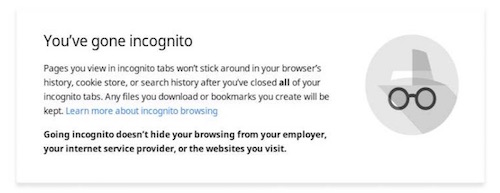 Google has been granted a new patent that could allow private browsing to kick in automatically based on what a user is browsing, without needing to turn it on manually.
Google has been granted a new patent that could allow private browsing to kick in automatically based on what a user is browsing, without needing to turn it on manually.
Incognito Mode in Google Chrome allows us to browse the web for…well, anything in a cloak of semi-anonymity. When enabled, web history and search terms are not logged, and any cookies, cache or other cruft is cleaned out when the private browsing session is exited.
The only “issue” is in remembering to use it!
Automatic Incognito Mode
In the patent granted to Google, uncovered by the Patent Yogi blog and subsequently picked up on by The Next Web, Incognito Mode would automatically kick in on desktop and mobile browsers based on the type of page you’re looking at.
As detailed in the patent, the feature works by analysing the content of a web page when requested (which takes place the moment you hit enter on a URL bar or click on a link).
If the page has a ‘privacy mode condition’ (the exact heuristics determining which are not divulged) Chrome would then prevent ‘web usage information’ — history, credit card information, search terms, etc. — from being logged or stored on your computer.
There’s no details (yet) as to when, how or if Google will incorporate the features of this patent into Chrome or Chrome OS. With online privacy such an important topic, any feature that goes some way towards helping us stay safe and secure online is sure to be welcomed.
- Source: TNW
